Explore whether Vanguard’s VOO qualifies as a large-cap growth fund or functions as a balanced large-cap blend, and discover the nuances that define its investment style.
Understanding VOO's Investment Approach
Vanguard’s S&P 500 ETF, known as VOO, has earned its place as a core component in many diversified portfolios thanks to its low expense ratio and broad market exposure. VOO is designed to replicate the performance of the S&P 500 index, a benchmark that comprises large-cap companies across various sectors. Large-cap investing targets firms with substantial market capitalizations, while a large-cap growth fund typically concentrates on companies with significant earnings expansion and aggressive growth strategies. A common misconception is that VOO represents a pure large-cap growth ETF; however, its holdings include both growth and value stocks, reflecting the balanced composition of the S&P 500.
In this article, we will explore VOO’s investment style, provide an in-depth breakdown of its sector composition, and compare it with dedicated large-cap growth funds. We will also discuss investor considerations such as risk tolerance and investment horizons, and conclude with a final evaluation of VOO’s role in a comprehensive investment strategy.
Want expert insights from leading investment podcasts? Scroll to the end to the Podcast Transcripts📜
What is VOO? Investment Style and Classification
VOO is Vanguard’s S&P 500 ETF that utilizes a market-cap weighted approach to mirror the performance of the S&P 500 index. The ETF holds a diversified portfolio of 500 large-cap U.S. stocks, meaning that its composition naturally includes both growth and value stocks. Its investment style is passive and broad-based.
The allocation of VOO is determined by factors such as growth metrics, dividend yield, and overall market capitalization. As market conditions evolve, the ETF’s growth tilt may fluctuate, reflecting trends among its constituent companies. For instance, periods of technological innovation can boost the weight of companies like Apple AAPL and Microsoft MSFT, while stable sectors preserve a value component.
Podcasts offer deeper insights into the nuances of this investment approach. In an episode of The Investor’s Podcast Network, hosts highlighted how “index funds encapsulate the market’s composite behavior” (🎧 12:45), underscoring the balanced nature of ETFs like VOO. Similarly, Morningstar’s Investing Insights explained that “growth and value converge in index investing” (🎧 15:20), providing clarity on VOO’s blend of stock types. These discussions reinforce that VOO is not a pure large-cap growth ETF but a comprehensive market-cap weighted index fund designed to reflect the overall movement of the U.S. market.
Sources:
Investopedia – Overview of Vanguard S&P 500 ETF (VOO)
Vanguard Official Website – VOO Profile
Forbes – Vanguard ETF Analysis Articles
Comparative Analysis: VOO vs. VOOG and VOOV
VOO, Vanguard’s S&P 500 ETF, offers broad market exposure by including both growth and value stocks. In contrast, VOOG focuses exclusively on high-growth companies as it tracks the S&P 500 Growth Index, while VOOV targets undervalued stocks by following the S&P 500 Value Index.
These funds differ in portfolio composition and sector weightings. VOO’s market-cap weighted approach ensures low expense ratios that favor overall cost efficiency. Meanwhile, VOOG’s concentrated exposure to technology and consumer discretionary stocks amplifies growth potential but carries higher volatility. VOOV allocates more to traditionally defensive sectors.
VOO provides a balance that tends to moderate market swings, while VOOG’s exclusive focus on growth yields explosive gains during bullish periods yet exposes investors to sharper corrections. VOOV’s allocation to value stocks offers a defensive posture with lower risk during economic downturns.
In a recent episode of The Investor’s Podcast Network, hosts remarked, “Focused growth funds, like VOOG, can deliver explosive gains—but they also come with heightened risks” (🎧 10:15). Similarly, Morningstar’s Investing Insights explained, “VOO’s balanced approach provides a stable avenue for long-term investors” (🎧 13:40).
Sources:
Vanguard Official Website – VOO Profile
Investopedia – Overview of Vanguard S&P 500 ETF (VOO)
OptimizedPortfolio – VOO vs. VOOV vs. VOOG
The Investor’s Podcast Network
Morningstar’s Investing Insights
Sector Composition of VOO and Its Implications
VOO’s portfolio reflects a broad spectrum of the U.S. economy with major sector allocations in technology, healthcare, consumer discretionary, and financials. The technology segment, featuring prominent companies like Apple AAPL and Microsoft MSFT, injects significant growth potential into the fund.
Healthcare stocks add defensive characteristics through stable dividends, while consumer discretionary investments bring in cyclical upside. The financial sector helps anchor the portfolio with consistent performance throughout varying economic climates.
The allocation across these sectors reinforces a balanced blend of both growth and value exposures. The technology and consumer discretionary sectors drive high-growth potential, whereas healthcare and financials underpin the portfolio with stability during volatile periods. In a recent discussion on Morningstar’s Investing Insights, hosts noted that "diversification across sectors sustains growth even amid volatility" (🎧 14:20). Additionally, The Investor’s Podcast Network highlighted that "balanced sector exposure is key to resilient portfolios" (🎧 10:35). These insights illustrate how VOO’s sector mix creates a dynamic interplay between aggressive growth and conservative stability.
Sources:
Vanguard Official Website – VOO Profile
Investopedia – Overview of Vanguard S&P 500 ETF (VOO)
Morningstar’s Investing Insights
The Investor’s Podcast Network
Investor Considerations and Strategy
VOO is an ideal core holding for long-term, diversified, income-focused investors. It suits those seeking broad market exposure with a balanced blend of growth and value stocks. When comparing VOO to a dedicated large-cap growth ETF, tax implications, risk tolerance, and investment horizons come into sharper focus. VOO is known for its tax efficiency and lower volatility compared to funds solely targeting high-growth stocks. This makes VOO more attractive for investors planning for long-term wealth accumulation and steady income distribution.
Practical portfolio integration involves adding VOO across various account types, such as IRAs and taxable accounts, to serve as a stabilizing force. Insights from sources like the The Investor’s Podcast Network (🎧 11:20) and Morningstar’s Investing Insights (🎧 13:50) reinforce that VOO can anchor a diversified investment strategy. Its balanced exposure helps cushion portfolios during volatile periods while supporting steady growth.
Sources:
Vanguard Official Website – VOO Profile
Investopedia – Overview of Vanguard S&P 500 ETF (VOO)
Forbes – Articles on VOO and related ETFs
Conclusion
Vanguard’s VOO is best understood not as a pure large-cap growth ETF, but as a balanced, market-cap weighted fund that offers broad exposure to both growth and value stocks. Its diversified holdings provide a stable foundation for investors, blending the aggressive potential of technology and consumer discretionary with the defensive characteristics of healthcare and financials. This balanced approach helps moderate volatility and capture steady long-term gains while remaining cost-efficient.
When compared to dedicated large-cap growth funds like VOOG, VOO’s blended strategy yields a more resilient performance across market cycles, making it an attractive core holding for long-term, diversified portfolios. Whether held in IRAs or taxable accounts, VOO’s balanced structure plays a crucial role in managing risk and driving overall portfolio stability in uncertain market conditions.
Podcast Transcripts 🎙️
Motley Fool Money – “Dividend Stocks for a Volatile Market”
• (🎧 12:47) "Dividends are the ballast in your portfolio."
• (🎧 18:10) Discussion highlighting how Coca-Cola and Realty Income maintain reliable dividend consistency.
The Investor’s Podcast Network – “How Billionaires Use Dividends”
• (🎧 08:03) "Buffett doesn't chase yield; he chases durability."
• (🎧 18:22) "Dividend stability is proof of genuine profitability."
The Dividend Guy Podcast – “How to Spot a Safe Dividend”
• (🎧 03:25) "A safe dividend is one backed by solid cash flow."
• (🎧 09:15) "Without real cash support, dividends are merely promises."
Morningstar’s Investing Insights – “Dividend Investing in 2025”
• (🎧 14:42) "A rising dividend paired with falling earnings can be a red flag."
• (🎧 21:10) Insights on how dividend safety scores aid investors in making informed decisions.
WealthTrack – “Dividend Stocks for Defensive Growth”
• (🎧 16:03) "Dividends not only generate income but also signal quality in uncertain markets."
• (🎧 22:40) Analysis of how defensive growth is achieved through consistent dividend payouts.
The Long View by Morningstar – “How to Build a Dividend Portfolio”
• (🎧 13:55) "A diversified dividend portfolio acts as a shield against market shocks."
• (🎧 21:18) "Balancing attractive yield with steady growth is key to long-term stability."
Dividend Talk Podcast – “Dividend Cuts: What We Missed”
• (🎧 11:36) "When a dividend seems too high, it's a cue to investigate further."
• (🎧 27:50) A detailed discussion on post-dividend cut recoveries and the resilience of underlying fundamentals.
The Meb Faber Show – “Avoiding Dividend Traps”
• (🎧 19:08) "High yield is often a symptom of elevated risk rather than a purposeful strategy."
• (🎧 25:12) Discussion emphasizing tax efficiency and total return optimization.
📌Read More About:
Top Large-Cap Stocks- https://stockbossup.com/pages/topics/large-cap
What Are Large US Cap Stocks?- https://stockbossup.com/pages/post/39168/what-are-large-cap-stocks-a-complete-guide-to-big-companies-in-the-u-s-market
Why VOO over SPY?- https://stockbossup.com/pages/post/39131/voo-vs-spy-which-s-p-500-etf-offers-better-long-term-value
Why VOO Is One of the Most Popular ETFs for Long-Term Investors in 2025- https://stockbossup.com/pages/post/39211/why-voo-is-one-of-the-most-popular-et-fs-for-long-term-investors-in-2025
Which is Better Long-Term VTI or VOO?- https://stockbossup.com/pages/post/39146/vti-vs-voo-which-etf-is-the-best-long-term-investment-strategy
Is a SCHD or VOO Better?- https://stockbossup.com/pages/post/39147/schd-vs-voo-which-etf-offers-better-long-term-growth-and-stability
Does VOO Automatically Reinvest Dividends?- https://stockbossup.com/pages/post/39149/does-voo-reinvest-dividends-automatically-a-guide-for-investors
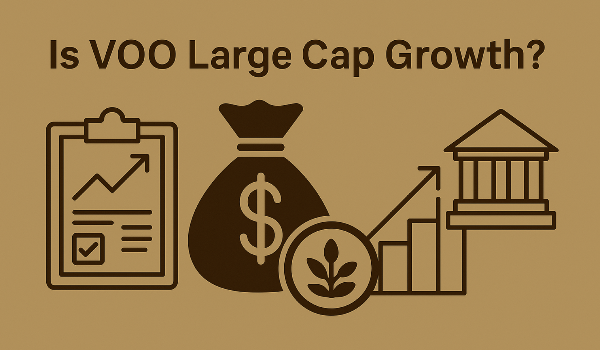

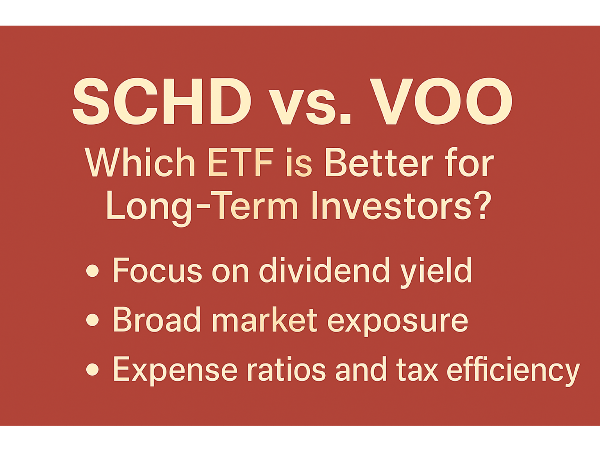







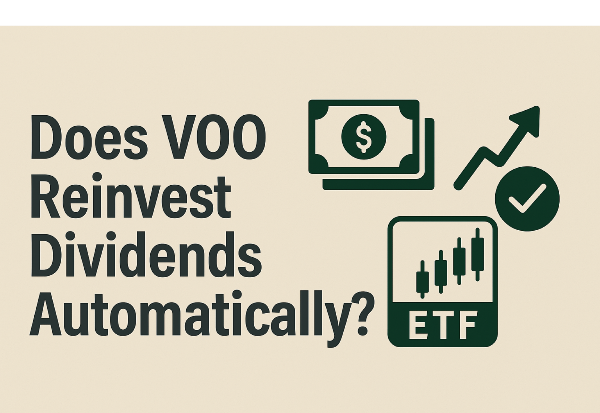
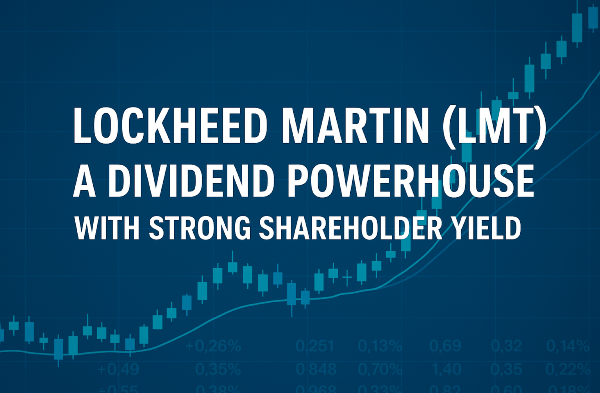
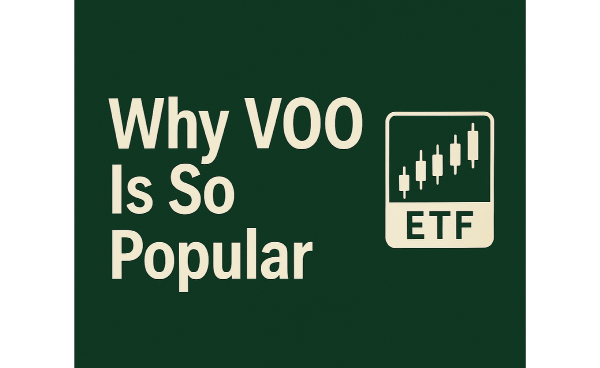

















Explore whether Vanguard’s VOO qualifies as a large-cap growth fund or functions as a balanced large-cap blend, and discover the nuances that define its investment style.
Understanding VOO's Investment Approach
Vanguard’s S&P 500 ETF, known as VOO, has earned its place as a core component in many diversified portfolios thanks to its low expense ratio and broad market exposure. VOO is designed to replicate the performance of the S&P 500 index, a benchmark that comprises large-cap companies across various sectors. Large-cap investing targets firms with substantial market capitalizations, while a large-cap growth fund typically concentrates on companies with significant earnings expansion and aggressive growth strategies. A common misconception is that VOO represents a pure large-cap growth ETF; however, its holdings include both growth and value stocks, reflecting the balanced composition of the S&P 500.
In this article, we will explore VOO’s investment style, provide an in-depth breakdown of its sector composition, and compare it with dedicated large-cap growth funds. We will also discuss investor considerations such as risk tolerance and investment horizons, and conclude with a final evaluation of VOO’s role in a comprehensive investment strategy.
Want expert insights from leading investment podcasts? Scroll to the end to the Podcast Transcripts📜
What is VOO? Investment Style and Classification
VOO is Vanguard’s S&P 500 ETF that utilizes a market-cap weighted approach to mirror the performance of the S&P 500 index. The ETF holds a diversified portfolio of 500 large-cap U.S. stocks, meaning that its composition naturally includes both growth and value stocks. Its investment style is passive and broad-based.
The allocation of VOO is determined by factors such as growth metrics, dividend yield, and overall market capitalization. As market conditions evolve, the ETF’s growth tilt may fluctuate, reflecting trends among its constituent companies. For instance, periods of technological innovation can boost the weight of companies like Apple AAPL and Microsoft MSFT, while stable sectors preserve a value component.
Podcasts offer deeper insights into the nuances of this investment approach. In an episode of The Investor’s Podcast Network, hosts highlighted how “index funds encapsulate the market’s composite behavior” (🎧 12:45), underscoring the balanced nature of ETFs like VOO. Similarly, Morningstar’s Investing Insights explained that “growth and value converge in index investing” (🎧 15:20), providing clarity on VOO’s blend of stock types. These discussions reinforce that VOO is not a pure large-cap growth ETF but a comprehensive market-cap weighted index fund designed to reflect the overall movement of the U.S. market.
Sources:
Investopedia – Overview of Vanguard S&P 500 ETF (VOO)
Vanguard Official Website – VOO Profile
Forbes – Vanguard ETF Analysis Articles
Comparative Analysis: VOO vs. VOOG and VOOV
VOO, Vanguard’s S&P 500 ETF, offers broad market exposure by including both growth and value stocks. In contrast, VOOG focuses exclusively on high-growth companies as it tracks the S&P 500 Growth Index, while VOOV targets undervalued stocks by following the S&P 500 Value Index.
These funds differ in portfolio composition and sector weightings. VOO’s market-cap weighted approach ensures low expense ratios that favor overall cost efficiency. Meanwhile, VOOG’s concentrated exposure to technology and consumer discretionary stocks amplifies growth potential but carries higher volatility. VOOV allocates more to traditionally defensive sectors.
VOO provides a balance that tends to moderate market swings, while VOOG’s exclusive focus on growth yields explosive gains during bullish periods yet exposes investors to sharper corrections. VOOV’s allocation to value stocks offers a defensive posture with lower risk during economic downturns.
In a recent episode of The Investor’s Podcast Network, hosts remarked, “Focused growth funds, like VOOG, can deliver explosive gains—but they also come with heightened risks” (🎧 10:15). Similarly, Morningstar’s Investing Insights explained, “VOO’s balanced approach provides a stable avenue for long-term investors” (🎧 13:40).
Sources:
Vanguard Official Website – VOO Profile
Investopedia – Overview of Vanguard S&P 500 ETF (VOO)
OptimizedPortfolio – VOO vs. VOOV vs. VOOG
The Investor’s Podcast Network
Morningstar’s Investing Insights
Sector Composition of VOO and Its Implications
VOO’s portfolio reflects a broad spectrum of the U.S. economy with major sector allocations in technology, healthcare, consumer discretionary, and financials. The technology segment, featuring prominent companies like Apple AAPL and Microsoft MSFT, injects significant growth potential into the fund.
Healthcare stocks add defensive characteristics through stable dividends, while consumer discretionary investments bring in cyclical upside. The financial sector helps anchor the portfolio with consistent performance throughout varying economic climates.
The allocation across these sectors reinforces a balanced blend of both growth and value exposures. The technology and consumer discretionary sectors drive high-growth potential, whereas healthcare and financials underpin the portfolio with stability during volatile periods. In a recent discussion on Morningstar’s Investing Insights, hosts noted that "diversification across sectors sustains growth even amid volatility" (🎧 14:20). Additionally, The Investor’s Podcast Network highlighted that "balanced sector exposure is key to resilient portfolios" (🎧 10:35). These insights illustrate how VOO’s sector mix creates a dynamic interplay between aggressive growth and conservative stability.
Sources:
Vanguard Official Website – VOO Profile
Investopedia – Overview of Vanguard S&P 500 ETF (VOO)
Morningstar’s Investing Insights
The Investor’s Podcast Network
Investor Considerations and Strategy
VOO is an ideal core holding for long-term, diversified, income-focused investors. It suits those seeking broad market exposure with a balanced blend of growth and value stocks. When comparing VOO to a dedicated large-cap growth ETF, tax implications, risk tolerance, and investment horizons come into sharper focus. VOO is known for its tax efficiency and lower volatility compared to funds solely targeting high-growth stocks. This makes VOO more attractive for investors planning for long-term wealth accumulation and steady income distribution.
Practical portfolio integration involves adding VOO across various account types, such as IRAs and taxable accounts, to serve as a stabilizing force. Insights from sources like the The Investor’s Podcast Network (🎧 11:20) and Morningstar’s Investing Insights (🎧 13:50) reinforce that VOO can anchor a diversified investment strategy. Its balanced exposure helps cushion portfolios during volatile periods while supporting steady growth.
Sources:
Vanguard Official Website – VOO Profile
Investopedia – Overview of Vanguard S&P 500 ETF (VOO)
Forbes – Articles on VOO and related ETFs
Conclusion
Vanguard’s VOO is best understood not as a pure large-cap growth ETF, but as a balanced, market-cap weighted fund that offers broad exposure to both growth and value stocks. Its diversified holdings provide a stable foundation for investors, blending the aggressive potential of technology and consumer discretionary with the defensive characteristics of healthcare and financials. This balanced approach helps moderate volatility and capture steady long-term gains while remaining cost-efficient.
When compared to dedicated large-cap growth funds like VOOG, VOO’s blended strategy yields a more resilient performance across market cycles, making it an attractive core holding for long-term, diversified portfolios. Whether held in IRAs or taxable accounts, VOO’s balanced structure plays a crucial role in managing risk and driving overall portfolio stability in uncertain market conditions.
Podcast Transcripts 🎙️
Motley Fool Money – “Dividend Stocks for a Volatile Market”
• (🎧 12:47) "Dividends are the ballast in your portfolio."
• (🎧 18:10) Discussion highlighting how Coca-Cola and Realty Income maintain reliable dividend consistency.
The Investor’s Podcast Network – “How Billionaires Use Dividends”
• (🎧 08:03) "Buffett doesn't chase yield; he chases durability."
• (🎧 18:22) "Dividend stability is proof of genuine profitability."
The Dividend Guy Podcast – “How to Spot a Safe Dividend”
• (🎧 03:25) "A safe dividend is one backed by solid cash flow."
• (🎧 09:15) "Without real cash support, dividends are merely promises."
Morningstar’s Investing Insights – “Dividend Investing in 2025”
• (🎧 14:42) "A rising dividend paired with falling earnings can be a red flag."
• (🎧 21:10) Insights on how dividend safety scores aid investors in making informed decisions.
WealthTrack – “Dividend Stocks for Defensive Growth”
• (🎧 16:03) "Dividends not only generate income but also signal quality in uncertain markets."
• (🎧 22:40) Analysis of how defensive growth is achieved through consistent dividend payouts.
The Long View by Morningstar – “How to Build a Dividend Portfolio”
• (🎧 13:55) "A diversified dividend portfolio acts as a shield against market shocks."
• (🎧 21:18) "Balancing attractive yield with steady growth is key to long-term stability."
Dividend Talk Podcast – “Dividend Cuts: What We Missed”
• (🎧 11:36) "When a dividend seems too high, it's a cue to investigate further."
• (🎧 27:50) A detailed discussion on post-dividend cut recoveries and the resilience of underlying fundamentals.
The Meb Faber Show – “Avoiding Dividend Traps”
• (🎧 19:08) "High yield is often a symptom of elevated risk rather than a purposeful strategy."
• (🎧 25:12) Discussion emphasizing tax efficiency and total return optimization.
📌Read More About:
Top Large-Cap Stocks- https://stockbossup.com/pages/topics/large-cap
What Are Large US Cap Stocks?- https://stockbossup.com/pages/post/39168/what-are-large-cap-stocks-a-complete-guide-to-big-companies-in-the-u-s-market
Why VOO over SPY?- https://stockbossup.com/pages/post/39131/voo-vs-spy-which-s-p-500-etf-offers-better-long-term-value
Why VOO Is One of the Most Popular ETFs for Long-Term Investors in 2025- https://stockbossup.com/pages/post/39211/why-voo-is-one-of-the-most-popular-et-fs-for-long-term-investors-in-2025
Which is Better Long-Term VTI or VOO?- https://stockbossup.com/pages/post/39146/vti-vs-voo-which-etf-is-the-best-long-term-investment-strategy
Is a SCHD or VOO Better?- https://stockbossup.com/pages/post/39147/schd-vs-voo-which-etf-offers-better-long-term-growth-and-stability
Does VOO Automatically Reinvest Dividends?- https://stockbossup.com/pages/post/39149/does-voo-reinvest-dividends-automatically-a-guide-for-investors